Lecture
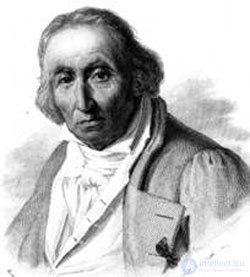
Joseph marie jacquard |
Joseph Marie Jacquard (Jacquard, JM) (1752–1834), son of the Lyon weaver, invented the loom since 1790. In 1804, I drove my car to Paris, where the Vaucanson machines (de Vaukanson) (1709-1782) guided it to the final machine design, carried out in 1808. Napoleon Bonaparte granted Jacquard the right to charge a premium of 50 francs from each machine tool in force in France. In 1812, 18,000 Jacquard machines operated in France [Brokgauz-Efron, vol.17, p.551]. |
| <img title="Jacquard machine punch cards" data-cke-saved-src="/th/25/blogs/id2011/1_8bcbd66b18b7be212f088d39f4ba2b1b.jpg" src="/th/25/blogs/id2011/1_8bcbd66b18b7be212f088d39f4ba2b1b.jpg" alt="Перфокарты станка Жаккарда" "="" border="0" hspace="6">
Jacquard machine punch cards |
Jacquard machine punch cards |
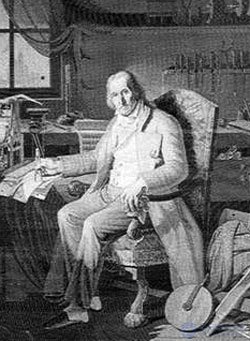
Didier Petit & Co |
In these machines, holes in metal plates were used to define the pattern on the fabric. The best achievement was a black and white self-portrait. The portrait required 24,000 cards. He was woven in Lyon in 1838 by Didier Petit & Co. The basis for him was the painting by the artist Claude Bonneford, while the director of the city school of fine arts. Currently, there are several portrait originals, one of which is in the Museum of Science and Technology in London [Essinger 2004, c.5]. |
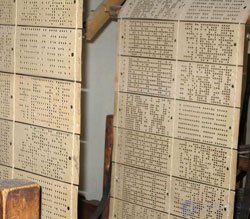
Jacquard machine |
The Jacquard loom belongs to those inventions that turned the lives of many people, leaving them without work and livelihood, which led to the uprising of Lyon weavers. |
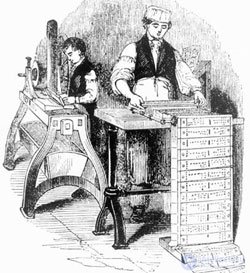
First programmers |
The first programmers. Preparation of cards for the Jacquard machine |
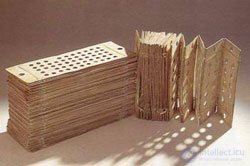
Punch cards |
Punch cards were also used in the Charles Babbage analytical machine. Small cards had a size of 13 * 5.5 cm and were managers, and large ones with a size of 18.5 * 7 cm served to store numbers [Swade 1998, p.31]. |
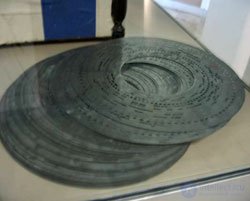
Jukebox discs |
Jukebox Discs, Leipzig, 1906 [Deutsches Museum 2005] |

Census Bureau |
Hollerith’s predecessor in the use of census automation machines was Charles William Seaton (1831-1885), who was the head of the 1880 census. He invented the tabulation machine for counting the census results [Census Bureau]. The device consisted of a wooden box with two rows of rollers: eight in the top row and seven in the bottom. |
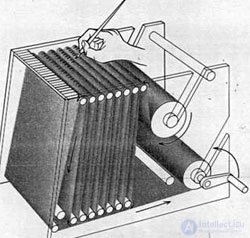
Seaton Devices |
Passing through the device a continuous paper tape wound on a reel, the operator could put up eight lines at the top (each of which contained the same information, for example, age) and this allowed him to process the necessary data without spending time searching for them on a paper canvas. [Reed Green 1989, p.71]. |
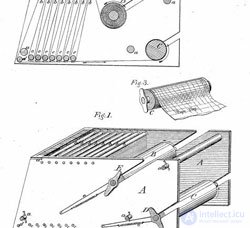
Tabulation machine |
Fig. of Charles Seaton's Patent Tabulating Machine (127,435) |
|
Sources: Essinger 2004: Essinger J. Jacquard's Web: The Hand-Loom. Oxford University Press, 2004. 256 p. |
|
Comments
To leave a comment
History of computer technology and IT technology
Terms: History of computer technology and IT technology